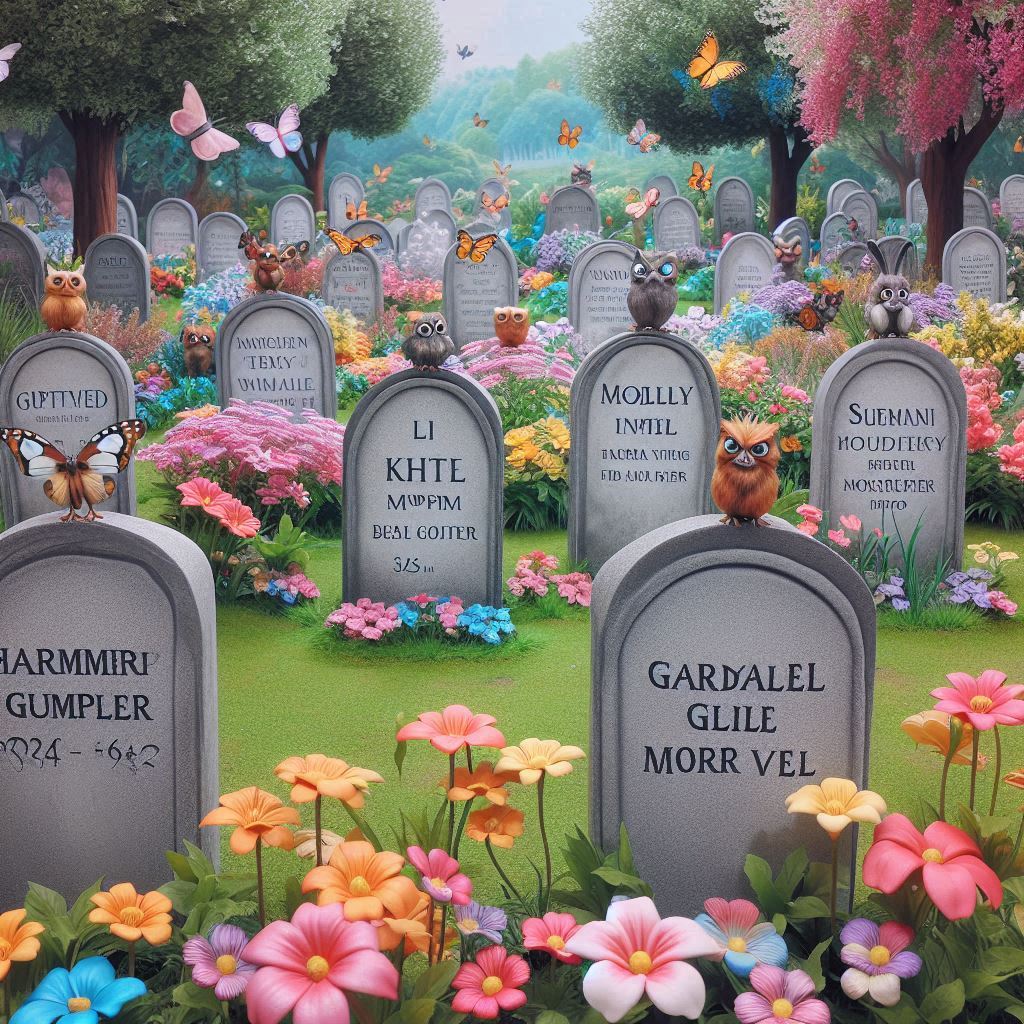Death is often considered a solemn and serious subject, but throughout history, people have found ways to inject humor into even the most somber occasions. One of the most enduring and fascinating examples of this is the use of funny names and epitaphs on tombstones. These humorous inscriptions offer a glimpse into the personalities of the deceased and provide a moment of levity for those left behind. In this article, we will explore the history, psychology, and cultural significance of funny names on tombstones, as well as provide tips for those considering a humorous epitaph for themselves or a loved one.

2. The History of Tombstones and Epitaphs
Tombstones have been used for centuries to mark the final resting places of the deceased. The earliest tombstones were simple markers, often just a stone with the name of the deceased. Over time, these markers evolved to include more detailed inscriptions, known as epitaphs. Epitaphs can range from simple statements of fact to elaborate poems or messages.
The tradition of using humor in epitaphs dates back to ancient times. The Romans, for example, were known for their witty and often irreverent inscriptions. One famous Roman epitaph reads, “I was not, I was, I am not, I care not,” a playful take on the transient nature of life.
3. The Rise of Humor in Memorials
The use of humor in memorials became more widespread during the Victorian era. This period saw a shift in attitudes towards death, with a greater emphasis on personal expression and individuality. People began to use tombstones as a way to celebrate the lives of the deceased, rather than just mourn their passing.
One of the most famous examples of a humorous Victorian tombstone is that of Spike Milligan, the British comedian. His epitaph reads, “I told you I was ill,” a fitting final joke from a man known for his wit.
4. Famous Funny Tombstones Around the World
There are countless examples of funny tombstones from around the world. Here are a few notable ones:
- Mel Blanc: The voice of Bugs Bunny and other Looney Tunes characters, his tombstone reads, “That’s all folks.”
- Bette Davis: The legendary actress’s tombstone features her famous quote, “She did it the hard way.”
- Frank Sinatra: The iconic singer’s tombstone bears the phrase, “The best is yet to come.”
These examples show how humor can be used to celebrate the lives of the deceased and provide comfort to those left behind.
5. The Psychology Behind Humorous Epitaphs
Humor is a powerful tool for coping with grief. It allows people to process difficult emotions and find moments of joy in the midst of sadness. Humorous epitaphs can serve as a reminder that life is to be celebrated, even in the face of death.
Psychologists have found that humor can help people deal with loss by providing a sense of perspective and reducing feelings of helplessness. A funny epitaph can be a way for the deceased to have the last laugh, and for the living to remember them with a smile.
6. How to Choose a Funny Epitaph
Choosing a funny epitaph can be a deeply personal decision. Here are some tips for selecting the right one:
- Reflect on the deceased’s personality: Consider what made the person unique and how they would want to be remembered.
- Keep it appropriate: While humor is important, it’s also essential to ensure that the epitaph is respectful and appropriate for a memorial.
- Consider the audience: Think about who will be visiting the grave and how they might react to the epitaph.
7. Legal and Cultural Considerations
Before choosing a humorous epitaph, it’s important to be aware of any legal or cultural considerations. Some cemeteries have strict guidelines about what can be inscribed on a tombstone, and it’s essential to check with the cemetery before making any decisions.
In some cultures, humor in memorials may be considered disrespectful. It’s important to be mindful of these cultural sensitivities and choose an epitaph that honors the deceased in a way that is appropriate for their background and beliefs.
8. The Role of Stonemasons in Creating Humorous Tombstones
Stonemasons play a crucial role in bringing humorous epitaphs to life. They are responsible for carving the inscriptions and ensuring that they are both legible and durable. Many stonemasons take great pride in their work and enjoy the challenge of creating unique and memorable tombstones.
Some stonemasons specialize in humorous epitaphs and have a portfolio of funny inscriptions they have created over the years. Working with a skilled stonemason can help ensure that the final product is both beautiful and meaningful.
9. Case Studies: Memorable Funny Tombstones
Here are a few case studies of memorable funny tombstones:
- John Yeast: His tombstone reads, “Here lies John Yeast. Pardon me for not rising.”
- Margaret Daniels: Her epitaph states, “She always said her feet were killing her, but no one believed her.”
- Lester Moore: His tombstone features the inscription, “Here lies Lester Moore. Four slugs from a .44. No Les, no more.”
These examples show how humor can be used to create a lasting and memorable tribute to the deceased.
10. The Impact of Social Media on Tombstone Humor
In recent years, social media has played a significant role in the popularity of funny tombstones. People often share photos of humorous epitaphs online, leading to a wider appreciation of this unique form of memorial.
Social media has also made it easier for people to find inspiration for their own humorous epitaphs. There are countless online communities dedicated to sharing and discussing funny tombstones, providing a wealth of ideas for those looking to create a unique memorial.
11. Conclusion
Funny names and epitaphs on tombstones offer a unique way to celebrate the lives of the deceased and provide comfort to those left behind. From ancient Rome to modern social media, humor has played an important role in how we remember and honor our loved ones. Whether you’re considering a humorous epitaph for yourself or a loved one, it’s important to choose something that reflects the personality of the deceased and is appropriate for their cultural and legal context.
12. FAQs
Q: Are there any restrictions on what can be written on a tombstone?
A: Yes, many cemeteries have guidelines about what can be inscribed on a tombstone. It’s important to check with the cemetery before making any decisions.
Q: Can I write my own epitaph?
A: Absolutely! Many people choose to write their own epitaphs as a way to have the final say in how they are remembered.
Q: Is it disrespectful to have a humorous epitaph?
A: It depends on the cultural and personal beliefs of the deceased and their family. In many cases, a humorous epitaph can be a fitting tribute to someone who had a great sense of humor.
13. Additional Resources
For those interested in learning more about funny tombstones and epitaphs, here are some additional resources:
- Books:
- “Epitaphs to Remember: Notable, Unusual, and Hilarious Inscriptions” by Robert F. Burgess
- “The Dead Beat: Lost Souls, Lucky Stiffs, and the Perverse Pleasures of Obituaries” by Marilyn Johnson
- Websites:






